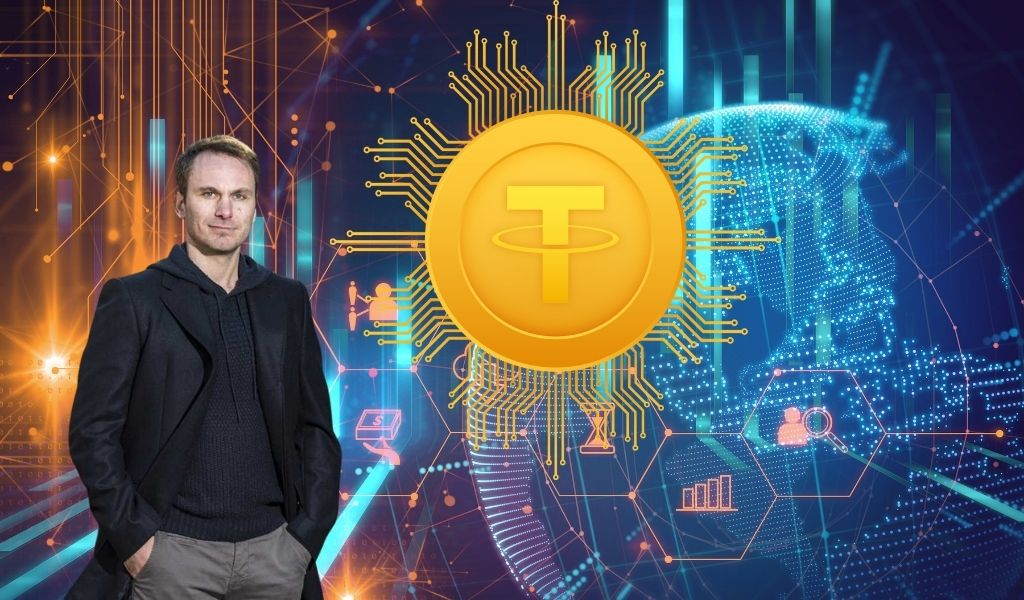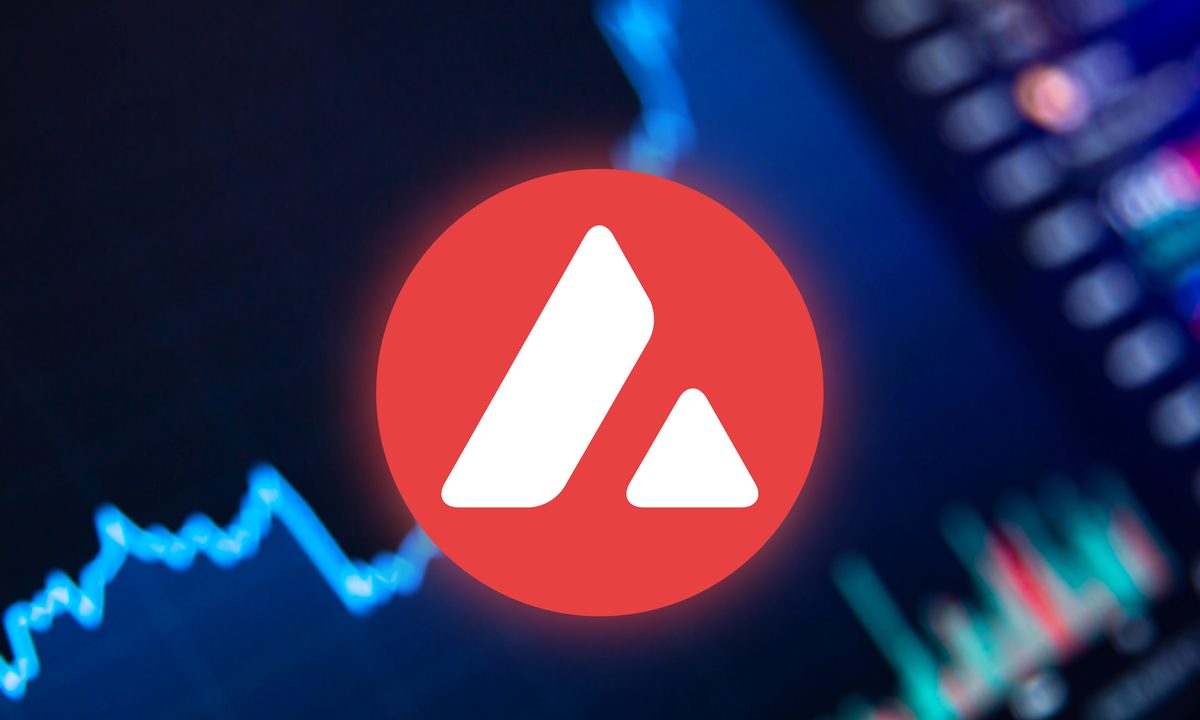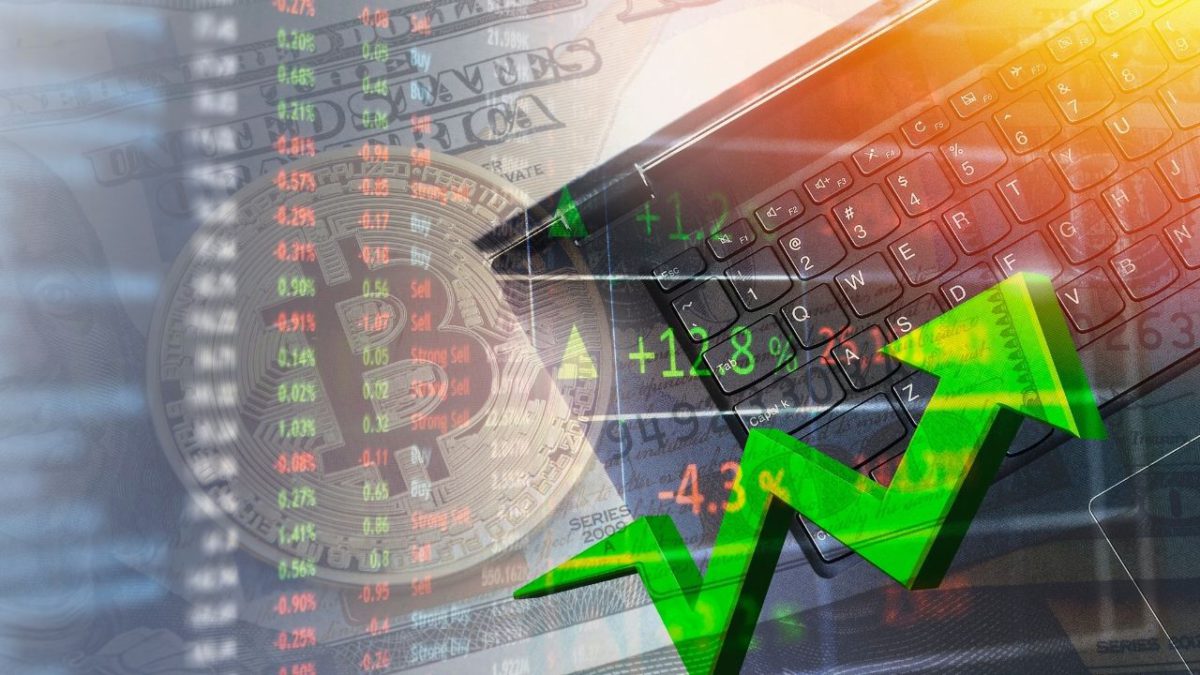Exploring The Top 10 Altcoins Trends Shaping The Crypto Landscape In 2024
As the cryptocurrency market continues to evolve, investors and enthusiasts are keenly observing the trends that shape the landscape. Altcoins, or alternative cryptocurrencies to Bitcoin, have gained significant attention for their unique features and potential for high returns. In this article, we delve into the top 10 altcoin trends that are likely to make waves in 2024.
The top 10 altcoin trends that are likely to make waves in 2024:
- Decentralized Finance (DeFi) Dominance: Decentralized Finance remains a powerhouse in the crypto space, and altcoins facilitating various DeFi services are gaining prominence. Coins like Aave, Compound, and Uniswap are at the forefront, enabling users to borrow, lend, and trade without intermediaries.
- Non-Fungible Tokens (NFTs) Integration: With the NFT boom showing no signs of slowing down, altcoins are integrating NFT capabilities into their ecosystems. Projects like Enjin, Decentraland, and Theta are exploring unique ways to incorporate non-fungible tokens, ranging from digital art to virtual real estate.
- Interoperability Solutions: Altcoins focusing on interoperability solutions are becoming increasingly vital as the crypto space expands. Polkadot, Cosmos, and Chainlink are working towards creating seamless communication between different blockchain networks, fostering collaboration and innovation.
- Privacy Coins Evolution: Privacy-focused altcoins such as Monero and Zcash continue to evolve, offering enhanced anonymity features. As regulatory scrutiny increases, these coins aim to strike a balance between privacy and compliance, catering to users who prioritize confidentiality.
- Smart Contract Platforms Innovation: Ethereum has long been a frontrunner in smart contract functionality, but competitors like Cardano, Binance Smart Chain, and Solana are pushing the boundaries. Altcoins are innovating to enhance scalability, reduce transaction fees, and improve overall efficiency.
- Energy-Efficient Solutions: In response to growing environmental concerns associated with cryptocurrency mining, altcoins are exploring energy-efficient consensus mechanisms. Projects like Algorand and Chia are gaining traction for their environmentally friendly approaches, attracting environmentally conscious investors.
- Community Governance and DAOs: Altcoins are increasingly adopting decentralized autonomous organizations (DAOs) to empower community-driven decision-making. Coins like DAOstack and Aragon enable users to participate in governance, making key decisions about the project’s future.
- Cross-Chain Compatibility: With the rise of multi-chain ecosystems, altcoins are focusing on cross-chain compatibility. Avalanche, Harmony, and Wanchain are working towards creating bridges that allow assets and data to flow seamlessly between different blockchain networks.
- Sustainability Initiatives: Sustainability is a growing concern, and altcoins are taking steps to address it. From carbon offset initiatives to eco-friendly mining practices, projects like Tezos and Harmony are incorporating sustainability into their core principles.
- Artificial Intelligence Integration: Altcoins are exploring the integration of artificial intelligence (AI) to enhance various aspects of their platforms. Coins like SingularityNET and Fetch.ai aim to leverage AI for tasks like predictive analysis, fraud detection, and network optimization.
Top 2 altcoins that boomed:

1. Ethereum (ETH):
Overview: Ethereum, founded by Vitalik Buterin, is a decentralized platform that introduced the groundbreaking concept of smart contracts. Launched in 2015, Ethereum enables developers to build decentralized applications (DApps) on its blockchain, leading to a diverse ecosystem of projects.
Key Features:
- Smart Contracts: Ethereum’s main innovation lies in its ability to execute self-executing contracts without intermediaries, facilitating a wide range of decentralized applications.
- Decentralized Finance (DeFi): Ethereum is a cornerstone of the DeFi movement, providing the infrastructure for lending, borrowing, and other financial services without traditional intermediaries.
- Ethereum 2.0: The ongoing transition to Ethereum 2.0 aims to enhance scalability and sustainability through a shift to a proof-of-stake consensus mechanism.
Recent Developments:
- NFT Craze: Ethereum experienced a surge in non-fungible token (NFT) activity, with digital art and collectibles gaining immense popularity.
- London Hard Fork: The London Hard Fork introduced EIP-1559 to improve transaction fee predictability and address scalability concerns.
- Institutional Interest: Growing institutional interest, with companies like Grayscale, and the exploration of Ethereum-based exchange-traded funds (ETFs).
Investors should stay updated on Ethereum’s developments, as the cryptocurrency market is subject to rapid changes. This information is based on the status as of my last update in January 2022.
2. Binance Coin (BNB):
Overview: Binance Coin (BNB) is the native cryptocurrency of the Binance exchange, created by Changpeng Zhao (CZ). Initially an ERC-20 token, BNB transitioned to Binance Smart Chain (BSC), offering a multitude of functionalities within the Binance ecosystem.
Key Features:
- Utility within Binance Ecosystem: BNB is utilized for various purposes within the Binance platform, including transaction fees, participation in token sales on Binance Launchpad, and peer-to-peer transactions.
- Binance Smart Chain (BSC): BNB’s value surged with the introduction of Binance Smart Chain, a parallel blockchain supporting smart contracts with faster and cheaper transactions compared to Ethereum.
- Token Burn Mechanism: Binance regularly conducts token burns, reducing the total supply of BNB and potentially increasing its scarcity.
Recent Developments:
- DeFi Growth on BSC: BNB gained traction in decentralized finance (DeFi) projects due to the efficiency and lower transaction costs on Binance Smart Chain.
- NFT Integration: Binance NFT marketplace and integration in various NFT projects contributed to BNB’s increasing popularity in the non-fungible token space.
- Regulatory Compliance: Binance’s efforts to enhance regulatory compliance and navigate evolving regulations positively influenced BNB’s perception among investors.
These altcoins have played pivotal roles in shaping the crypto landscape, each with its unique features, use cases, and recent developments contributing to their success and popularity. Investors should conduct thorough research and consider the dynamic nature of the crypto market before making investment decisions.
☀️ Good morning Friday with lots of positive energy to the family ! ☕️🙋
💥 I am a believer in #BTC and the cryptocurrency market. Today could be a very important day and is awaited by many people who believe in #BTC like me.
Today we may receive a decision from the SEC on… pic.twitter.com/XXBto4Hg9d
— JAV _ BTC (@ghi_vu) January 5, 2024
Which altcoins are the future?

1. Polkadot (DOT):
Overview: Polkadot, founded by Dr. Gavin Wood, is designed as a multi-chain network that enables different blockchains to transfer messages and value in a trust-free fashion.
Key Features:
- Interoperability: Focuses on creating a decentralized web where multiple blockchains can communicate and share information seamlessly.
- Parachains: Introduces the concept of parachains, individual blockchains that connect to the Polkadot relay chain, enhancing scalability and customization.
- Governance: Employs a decentralized governance system for protocol upgrades and decision-making.
Potential:
- Polkadot’s interoperability model addresses one of the significant challenges in the blockchain space, making it a potential solution for the future decentralized internet.
2. Chainlink (LINK):
Overview: Chainlink is a decentralized oracle network that connects smart contracts with real-world data, enabling them to interact with external information in a secure and reliable manner.
Key Features:
- Decentralized Oracles: Provides tamper-proof and reliable data inputs to smart contracts, enhancing their functionality.
- Wide Integration: Chainlink is widely integrated into various blockchain projects, particularly in decentralized finance (DeFi) applications.
- Data Security: Aims to solve the problem of centralized points of failure in smart contracts by decentralizing data sources.
Potential:
- As smart contracts become integral to blockchain ecosystems, Chainlink’s decentralized oracle network is crucial for connecting these contracts to real-world data, making it a potential long-term player.
3. Solana (SOL):
Overview: Solana is a high-performance blockchain platform designed for decentralized applications (DApps) and crypto projects.
Key Features:
- High Throughput: Solana aims to solve the scalability issue by providing high throughput and low transaction costs.
- Proof-of-History (PoH): Introduces a unique PoH consensus mechanism to enhance scalability without sacrificing security.
- Delegated Proof-of-Stake (DPoS): Utilizes a DPoS mechanism for efficient block production.
Potential:
- Solana’s focus on scalability and high throughput positions it as a potential blockchain for mainstream adoption, especially as decentralized applications become more complex.
4. Cardano (ADA):
Overview: Cardano is a blockchain platform known for its research-driven approach and focus on scalability, sustainability, and interoperability.
Key Features:
- Proof-of-Stake: Utilizes a proof-of-stake consensus mechanism for energy efficiency and scalability.
- Decentralized Governance: Employs a decentralized governance system to involve the community in decision-making.
- Formal Verification: Prioritizes academic research and formal verification for enhanced security.
Potential:
- Cardano’s ongoing developments, such as the implementation of smart contracts through the Alonzo upgrade, position it as a potential contender for a wide range of decentralized applications.
5. VeChain (VET):
Overview: VeChain focuses on supply chain management, using blockchain technology to enhance transparency and traceability in various industries.
Key Features:
- Enterprise Adoption: VeChain has secured partnerships with numerous enterprises for supply chain and logistics solutions.
- Thor Power: Introduces the Thor blockchain to facilitate smart contracts and transactions on the VeChain network.
- Tokenomics: The VeChainThor blockchain has its native cryptocurrency, VET, which is used for transactions and governance.
Potential:
- As businesses increasingly seek transparent and secure supply chain solutions, VeChain’s unique approach positions it as a potential player in enterprise blockchain applications.
While these altcoins show promise, predicting the future in the volatile cryptocurrency market is inherently uncertain. Investors should conduct thorough research, consider the fundamentals of each project, and be aware of the risks associated with the crypto space. Diversification and a long-term perspective are often recommended strategies in navigating the evolving landscape of altcoins.
Conclusion:
The altcoin market, characterized by its dynamism and constant evolution, offers a diverse array of opportunities for investors. As we delve into the complex world of cryptocurrencies, it becomes imperative for market participants to adopt a strategic and informed approach. The exploration of the top 10 altcoin trends provides a valuable roadmap for understanding the current state and potential future developments in the cryptocurrency landscape.
1. Dynamics of the Altcoin Market: The altcoin market, often seen as the breeding ground for innovation and disruption, operates in a state of perpetual change. New projects, technologies, and trends regularly emerge, challenging the status quo and reshaping the competitive landscape. This dynamism demands vigilance and adaptability from investors seeking to navigate the market successfully.
2. Fundamentals as the Bedrock: Fundamental analysis remains the cornerstone of prudent investment decisions in the altcoin space. Investors must delve deep into the specifics of each project, evaluating aspects such as the team’s expertise, project whitepapers, underlying technology, and the real-world problems the project aims to solve. A robust foundation ensures that the altcoin has the potential for long-term viability.
3. Technological Innovation: Altcoins that stand out often exhibit technological innovation and advancement. Whether it’s the implementation of novel consensus mechanisms, smart contract capabilities, or unique features addressing scalability and security, technological prowess plays a pivotal role in determining an altcoin’s potential success. Investors should keep a keen eye on projects pushing the boundaries of what is possible in the blockchain space.
4. Community Support and Engagement: A vibrant and engaged community is a strong indicator of an altcoin’s potential for growth and adoption. Beyond the project’s core team, community support fosters a network effect, driving awareness, usage, and even contributing to the project’s development. Active community engagement often reflects the genuine interest and belief in the altcoin’s mission.
5. Informed Decision-Making: As investors tread further into the altcoin market, informed decision-making becomes paramount. This entails staying abreast of market trends, regulatory developments, and macroeconomic factors that could impact the broader cryptocurrency landscape. An educated investor is better equipped to navigate the market’s highs and lows with resilience and a long-term perspective.
6. Roadmap for 2024: The top 10 altcoin trends outlined in this analysis provide a forward-looking perspective for the year 2024. From decentralized finance (DeFi) dominance to the integration of non-fungible tokens (NFTs), the roadmap illustrates the key areas where innovation and growth are expected. Investors are encouraged to use this roadmap as a guide, understanding that the cryptocurrency market is subject to rapid change, and flexibility in strategy may be necessary.
In conclusion, the altcoin market is a dynamic ecosystem that demands careful consideration, due diligence, and adaptability from investors. By analyzing the fundamentals, embracing technological innovation, and understanding the role of community support, investors can position themselves to navigate the evolving landscape of the cryptocurrency market in 2024 and beyond.
Stay informed with daily updates from Blockchain Magazine on Google News. Click here to follow us and mark as favorite: [Blockchain Magazine on Google News].
editor's pick
Get Blockchain Insights In Inbox
Stay ahead of the curve with expert analysis and market updates.
latest from tech
Disclaimer: Any post shared by a third-party agency are sponsored and Blockchain Magazine has no views on any such posts. The views and opinions expressed in this post are those of the clients and do not necessarily reflect the official policy or position of Blockchain Magazine. The information provided in this post is for informational purposes only and should not be considered as financial, investment, or professional advice. Blockchain Magazine does not endorse or promote any specific products, services, or companies mentioned in this posts. Readers are encouraged to conduct their own research and consult with a qualified professional before making any financial decisions. The featured image used is just a creative depiction of the title and it does not intend to hurt sentiments of any person or institution. If it hurts anyone sentiments, please do not hesitate to reach out to Blockchain Magazine.

 Bitcoin
Bitcoin  Ethereum
Ethereum  XRP
XRP  Tether
Tether  Solana
Solana  USDC
USDC  Dogecoin
Dogecoin  Cardano
Cardano  Lido Staked Ether
Lido Staked Ether  TRON
TRON  Wrapped Bitcoin
Wrapped Bitcoin  Chainlink
Chainlink  Wrapped stETH
Wrapped stETH  Avalanche
Avalanche  Sui
Sui  Stellar
Stellar  Litecoin
Litecoin  Hedera
Hedera  LEO Token
LEO Token  Shiba Inu
Shiba Inu  Toncoin
Toncoin  Hyperliquid
Hyperliquid  USDS
USDS  Polkadot
Polkadot  WETH
WETH  MANTRA
MANTRA  Bitcoin Cash
Bitcoin Cash  Bitget Token
Bitget Token  Ethena USDe
Ethena USDe  Wrapped eETH
Wrapped eETH  Uniswap
Uniswap  Monero
Monero  NEAR Protocol
NEAR Protocol  WhiteBIT Coin
WhiteBIT Coin  Pepe
Pepe  Bittensor
Bittensor  Aave
Aave  Ondo
Ondo  Aptos
Aptos  Internet Computer
Internet Computer  Dai
Dai  Official Trump
Official Trump  Ethereum Classic
Ethereum Classic  Mantle
Mantle  Tokenize Xchange
Tokenize Xchange  OKB
OKB  Gate
Gate  sUSDS
sUSDS  Sonic (prev. FTM)
Sonic (prev. FTM) 




